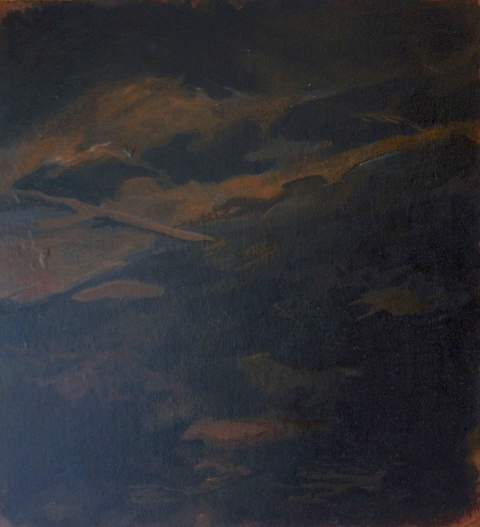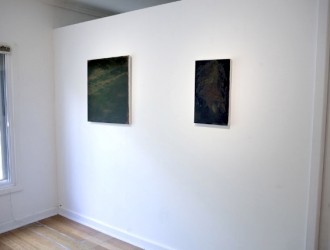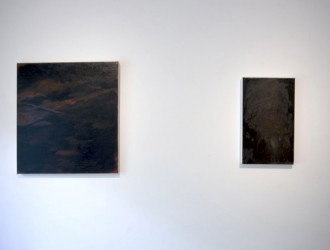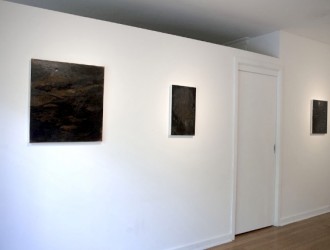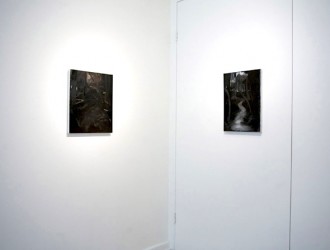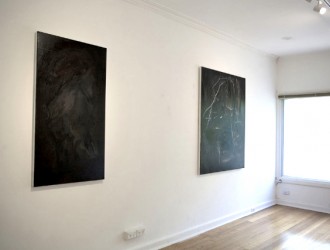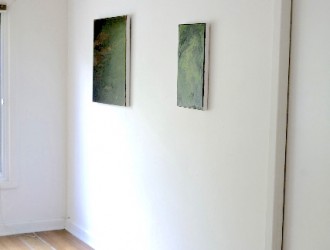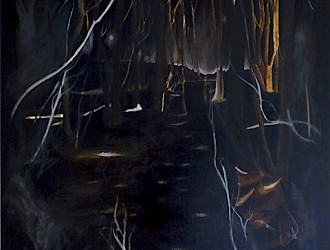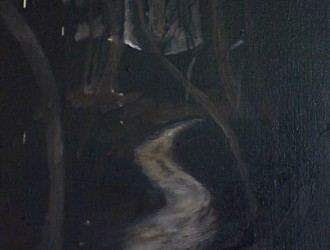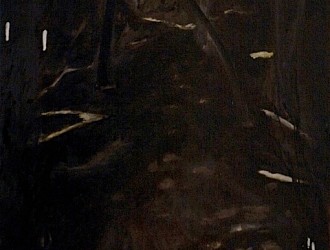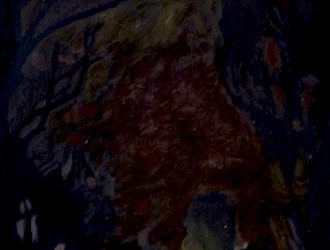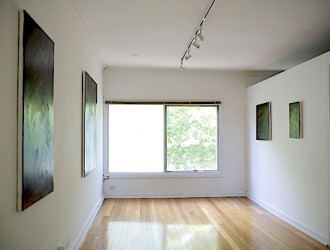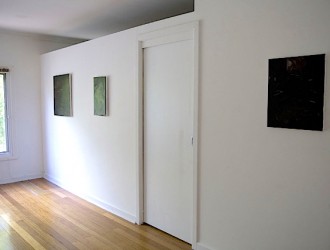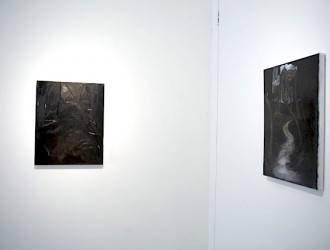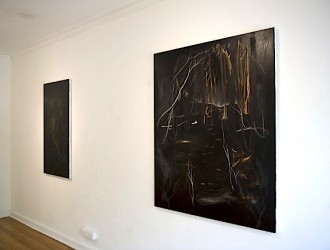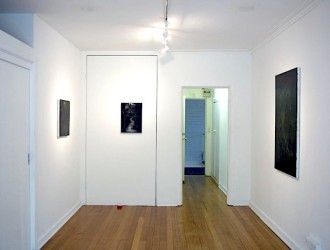Shadow PlayAaron Martin’s current exhibition of works at Apartment surrounds the aptly small space with their dark and individual intimacies. Each work of oil on canvas, varying in size from one another, implore the viewer to peer towards a shrouded horizon in search of a narrative as one would the opening page of a Grimm fairytale. There is one exception: a study of the water’s surface of a stream. This deftly ambiguous work is painted in dark, warm tones and at first (before reading the title) I mistook it for a study of a terrain. This work sits in contrast to its adjacent landscapes with their indefinite horizons and sinister interiors.Much of the work is strikingly monochromatic. Branches are etched out in ghostly whites hovering over unwavering fields of blackness reminding me of Andrew Browne’s Night Pictures. Martin has chosen to work in a loose, raw style which is reminiscent of Peter Booth’s charcoal and casein landscapes on paper, or even his larger monochromatic works on canvas, where the landscape is riveted by an atmosphere charged with absence. Like such artists as Peter Booth or Bill Henson, Martin is interested in the haunting, apocalyptic expression of the Australian landscape as it relates to the individual in the space. Where previous work depicted the figure in the landscape in true Romantic fashion, the figure is absent from these works. Their absence therefore invites the viewer to position themselves as the subject in these works or, indeed, to position the artist himself.I suspect Martin’s personal relationship to the Australian landscape furtively informs this series of works. Venturing out and photographing the landscape around his home region of Gippsland, Martin is interested in the relationship between personal memory and the landscape as well as the affiliation between urban and rural; the marginal periphery where the decadent threads of urbanity and nature quietly overlap. The darkness that resides in the cleavage of this liminal place spills forth into these works. Light emanates from an ambivalent horizon—a bushfire? Car lights? Light is caught on foreground branches as if from a camera flash or from car headlights, whereas any residual radiance is sucked into the ebon surrounds. Martin’s use of black in his paintings harks back to his abstract resin works where the materiality and process where of high importance. Martin’s attention to surfaces is seen in these works where varying layers of tone and reflective qualities in the paint play across the surfaces of the paintings.In a perfect world, these works would be lowly lit (preferably a twilight), permitting the blacks to become velvety and the highlights to glow. I can’t help but imagine that the shadowy intimacy of a little chapel tucked away in a 15th-century Roman church would do ideal justice to the chiaroscuro in these paintings. As the title of this exhibition suggests, the subliminal aspect of these works dwells in what is not seen. Like other Australian artists such as Booth or Henson, these paintings pick up the threads of a dark and tacit narrative inhabiting the outskirts of our antipodean reality, portraying the unspoken and the unspeakable: what every representation misses, what is forgotten there: this "presence"...which persists not so much at the limits but rather at the heart of representation; this unnameable in the secret of names, a forgotten that is not the result of a forgetting of a reality...and which one can only remember as forgotten "before" memory and forgetting, and by repeating it (Lyotard).Shadow Play is exhibiting at Apartment until the 23rd of this month.Sussi Ross 19/12/2007
SHADOWPLAY | 2007
Apartment | Melbourne
